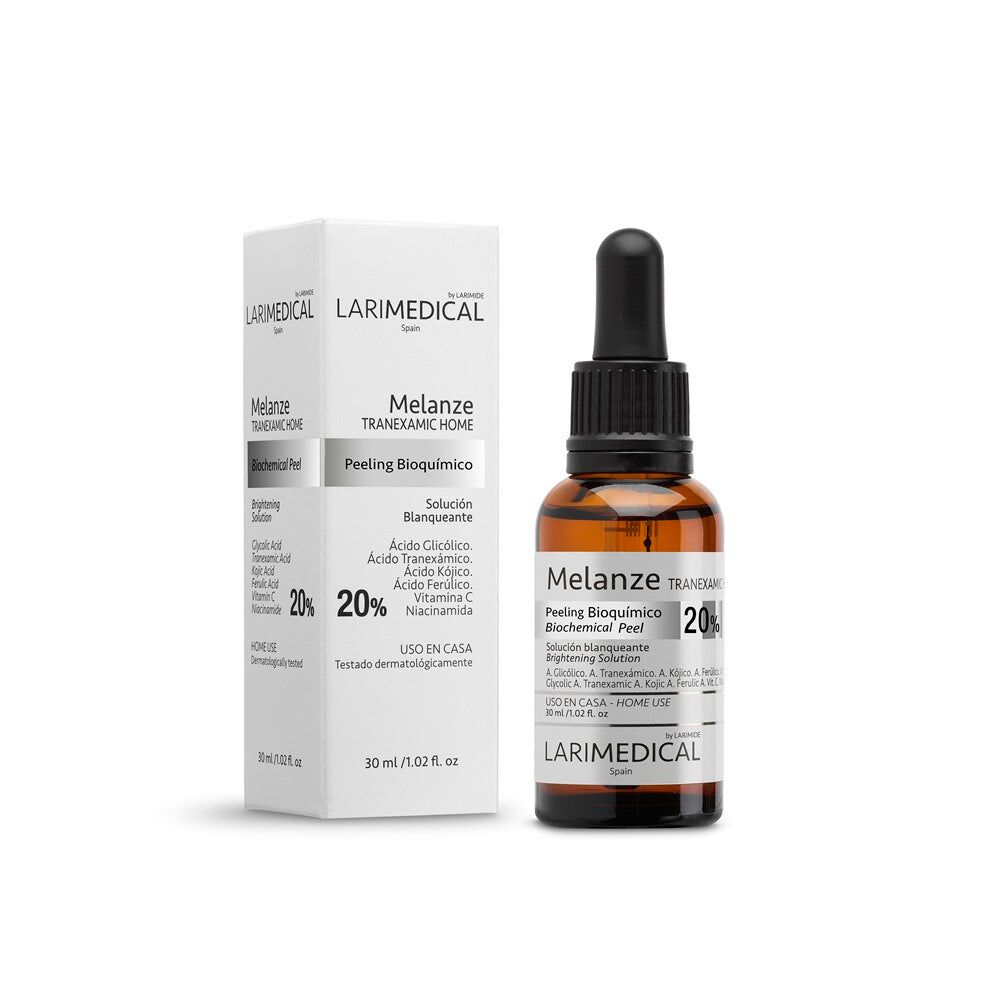Description
This product contains a variety of active ingredients specifically designed to combat dermal hyperpigmentation by targeting every step of melanin formation. Its professional-grade formula has been moderately concentrated for safe at-home use, making it ideal for non-experts. It is crucial to follow the recommended instructions precisely to avoid any potential adverse reactions. This medium biochemical peel effectively targets the superficial layers of the dermis, resulting in noticeably smoother skin after just one application. More intense marks and discoloration will fade with repeated use. For best results, it is recommended to use this product every two to three weeks, depending on individual skin’s recovery rate. For those seeking more significant results, the frequency of peeling can be adjusted until desired effects are achieved, or can be paused during the spring and summer months. It is specifically designed for older individuals with pronounced signs of aging, marks, and pigmentation issues, or roughness of the skin.
Hyperpigmentation
Skin hyperpigmentation is an excess of melanin in the skin that can have different causes and can be of different types. The sun is one of the main factors in the appearance of hyperpigmentation in the dermis, as a consequence of an excess of radiation and the consequent damage to the skin. It can also be caused by an excessive production of melanin, which can be diffuse or local, that is, localized or not in different areas such as the face, torso and hands.
Due to the large amount of sunlight to which we are exposed to daily, our skin defends itself by generating melanin that protects us from the harmful effects of this exposure.
Melanin is a substance that our body produces in melanocytes, in the lower layer of the epidermis. It is the pigment responsible for the color of the skin as well as the hair, eyes, etc. With age, the distribution of melanocytes is less diffuse and their regulation occurs in a less controlled way by the body. In some cases, even allergic reactions occur or the melanin pigment is overproduced, generating hyperpigmented skin with spots, melasma, darker skin tone and other problems that also cause an aesthetic deterioration in the skin.
Before carrying out any skin hyperpigmentation treatment, a customized and exhaustive study must be carried out by a specialist. The professional will determine what has caused the hyperpigmentation and the best alternative to treat it, in addition to ruling out any malignant wounds on the skin.
TECHNOLOGY
The color of the skin is determined by the type, quantity and distribution of melanin, a natural pigment that runs through our skin.
Natural aging, air pollution, and UV exposure induce the abnormal accumulation of melanin in the skin, leading to sun spots, freckles, melasmas, liver spots, etc. These spots are not only not aesthetic but also can provoke skin problems.
To limit melanin synthesis, the key enzyme is tyrosinase. This enzyme acts directly on the formation of melanin: tyrosinase reduces melanin synthesis and reduces skin pigmentation.
To reduce the amount of melanin in our skin, it is essential to have good daily care habits, such as using sunscreen, having the skin properly hydrated, not exposing ourselves to the sun for too many hours and protect the skin at times of the day where the sun is has greater impact.
But once the damage to our skin has already occurred, it is possible to prevent it by using treatments such as peeling to reduce the amount of pigmentation in the skin and, on the other hand, protect the cells of the dermis from being permanently damaged.

Reviews
There are no reviews yet.